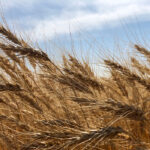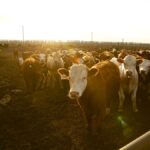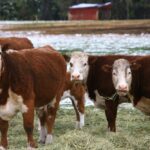Reading Time: < 1 minute It was the worst year in a generation but production in Alberta was still considerably better than 2002. For example, spring wheat production this year fell to 5.71 million tonnes (according to the latest StatCan estimates). But that’s more than double the 2.59 million tonnes in 2002. On a per-seeded-acre basis, it was 35.9 bushels per […] Read more

2021 was a bad crop year, but not 2002 bad

Don’t panic yet: Normal grain movement should be restored
Barring more torrential rains, railways should be able to catch up on grain deliveries by spring
Reading Time: 4 minutes Grain has once again started moving to the Port of Vancouver after last month’s flooding — but very slowly. “For the next couple of months, I think it’s going to be a very light program out of Vancouver,” Quorum Corp. president Mark Hemmes said on Dec. 3. “They’ve got track back, but a lot of […] Read more

Plot2Farm heading into third season
Reading Time: < 1 minute Alberta Wheat and Alberta Barley are now taking Plot2Farm applications for next year. The initiative was launched in 2020 to better understand “how particular management practices impact crop quality and yield” on individual farms. The program seeks to replicate promising small-plot trial research results on farms, with producers being assisted by an agronomist. This allows […] Read more

Feed weekly outlook: Wheat, barley supplies tighten, replaced by corn
MarketsFarm — The further tightening of wheat and barley feed supplies is prompting feedlots to purchase more corn from the U.S., according to an Alberta-based analyst. “We’re nine months away, or almost 10 months away from more inventory coming in. There’s not much there for wheat and barley,” said Mike Fleischhauer of Eagle Commodities at […] Read more

Klassen: Feeder market stabilizes
Cow-calf producers selling sooner than normal
Compared to last week, western Canadian feeder cattle prices traded $2-$3 on either side of unchanged. Alberta packers were buying fed cattle on a dressed basis at $275 delivered; the Alberta fed market has rallied $10-$12 over the past couple weeks. Secondly, U.S. feeder cattle prices have also rallied US$10-US$12 during the same time frame […] Read more

Canola declines, durum drops in new StatsCan estimates
Soybean, oats estimates raised
MarketsFarm — There were very few surprises in Statistics Canada’s latest principal field crop production estimates released Friday — the first in 2021-22 to use a survey of producers. Nevertheless, they quantified just how severe last summer’s drought was in Western Canada. Canola production for the 2021-22 marketing year was estimated to be 12.595 million […] Read more

Feed weekly outlook: Prices strong, beginning to stabilize
MarketsFarm — Feed grain bids in Western Canada have shown some strength over the past month, but were stabilizing in early December as corn imports pick up from the U.S. Erin Harakal, trade manager at Agfinity Inc. at Stony Plain, Alta., said prices have been strong over the past month but steady over the past […] Read more

Late enrolment in AgriStability not much help, says Alberta Wheat
An uncertain AgriStability payout a year from now won’t help grain farmers facing cash flow issues
Reading Time: 3 minutes Allowing for late participation in AgriStability is unlikely to help Alberta producers facing a cash flow crunch. “We’re going to be going into a period of significant cash flow shortages for farmers — maybe not all, but many,” said Tom Steve, general manager of Alberta Wheat and Barley. “Late enrolment would be fine, but is […] Read more

Smaller crops likely in StatsCan survey-based report
MarketsFarm — Mindful of the summer drought conditions that seriously cut into crop production across the Prairies, average trade estimates call for downward revisions to Statistics Canada’s already-small forecasts for most crops when the it releases its first survey-based estimates of the marketing year on Friday. While prior reports, in September and August, were compiled […] Read more

Second round of emergency drought aid program opens in January
Applications only being taken until Jan. 31, producers who didn’t get first payment are eligible
Reading Time: 2 minutes Applications for Phase 2 of the emergency drought relief program for livestock producers will be out in early January — but applicants will need to get them in quickly. Producers hit by drought were eligible for a payment of $94 per breeding cow in the first round. In the second phase, they can apply for […] Read more

